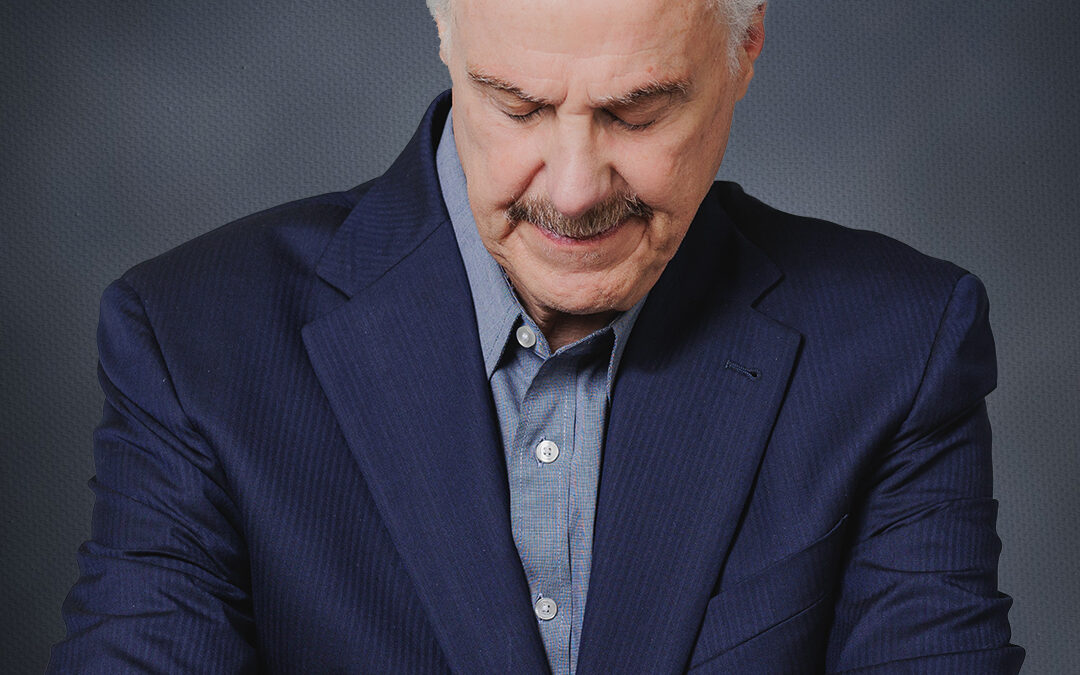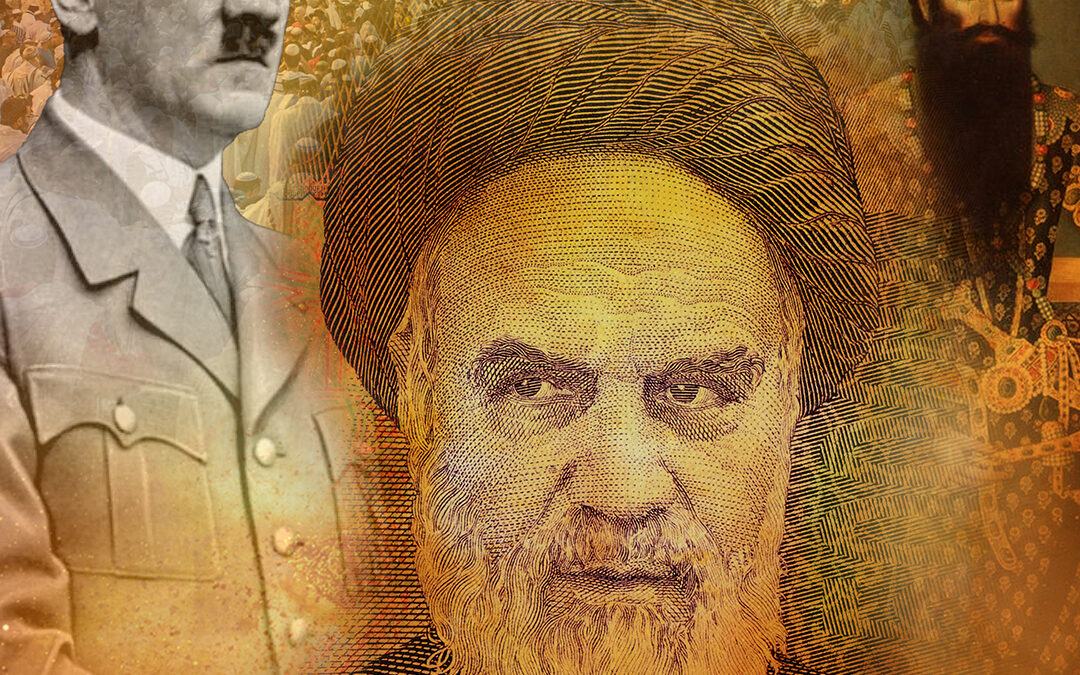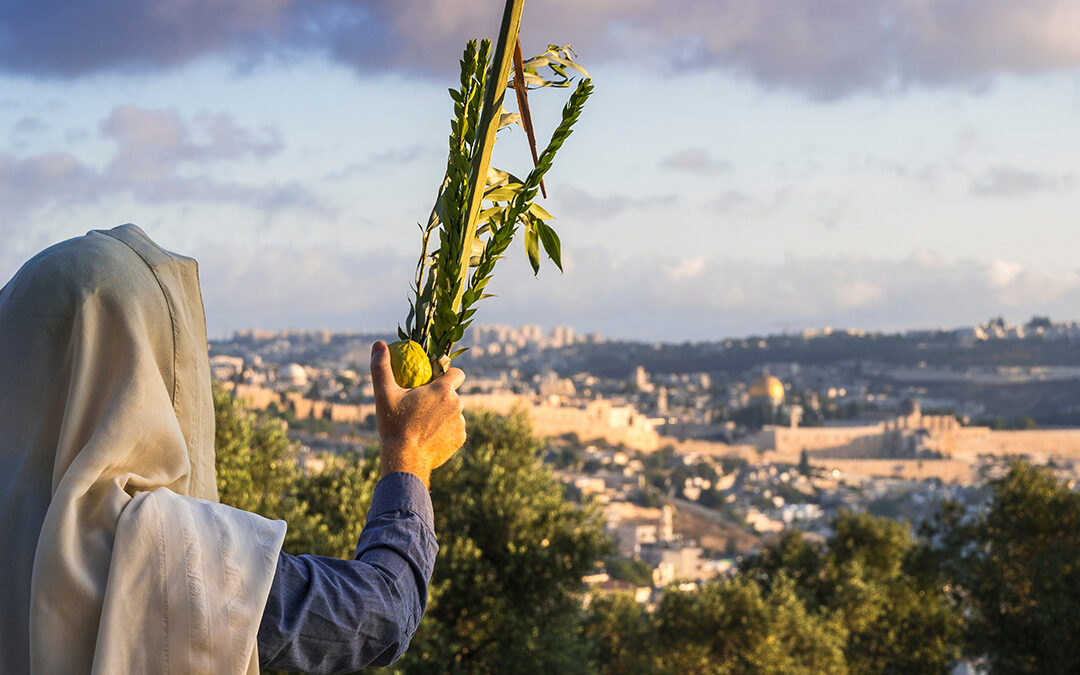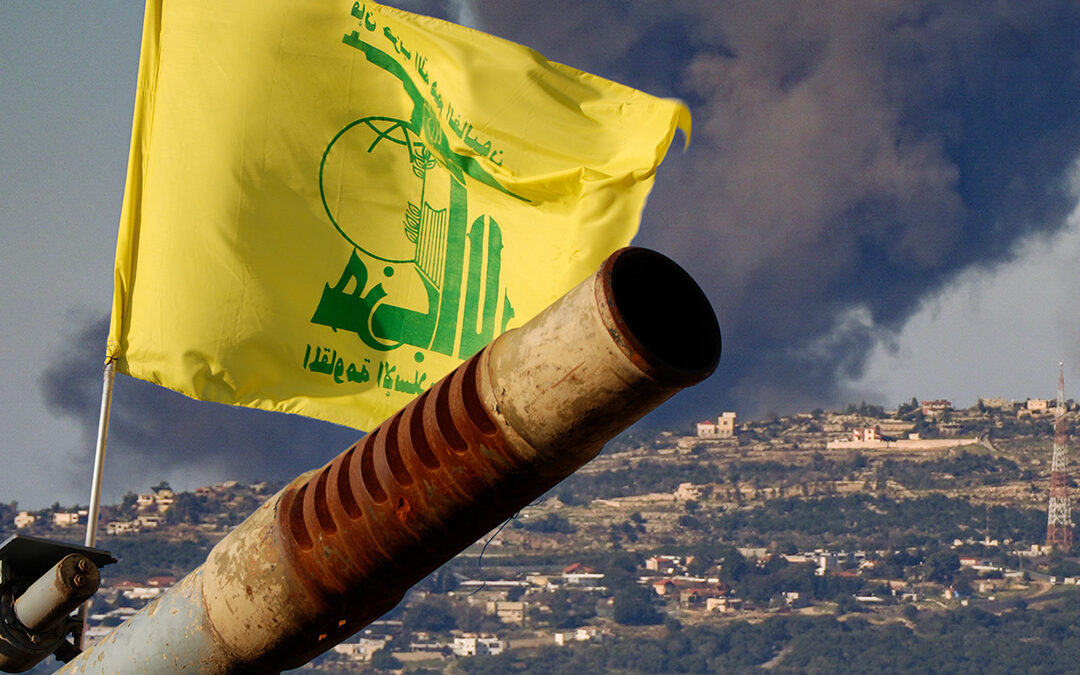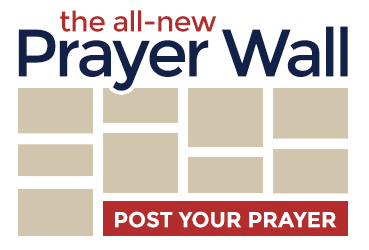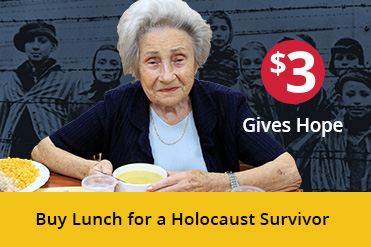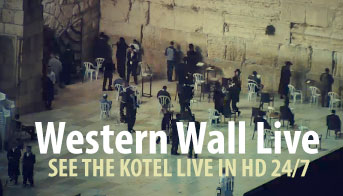Prophetic Messages
For Our Day
The seven major feasts set forth by Jehovah in the Old Testament book of Leviticus give a cadence, a pattern to the lives of the Jewish people. These holy days reassure the celebrants of God’s divine order, piety, and supreme worthiness. Jehovah cares for and watches over His people. The feasts have provided a thread of continuity for the Israelites from the moment of their escape from Egypt, as well as offering comfort, hope, and encouragement in times of trouble. The purpose of the seven observances is to turn the focus of the people to salvation and redemption through the Messiah.
The seven feasts God gave to Israel provide a picture of the past, present, and future. The first four feasts—Passover, Unleavened Bread, Firstfruits, and Pentecost—outline events that were fulfilled by Christ during and immediately after His time on earth. Some Bible scholars believe the Church today is living in the three-month period between Pentecost and Rosh Hashanah, the Feast of Trumpets. When we look at the feasts, especially the three that happen in the fall, we are looking at a picture of God’s plan for the future. These feasts are not just historical events, but prophetic depictions of the things yet to come.
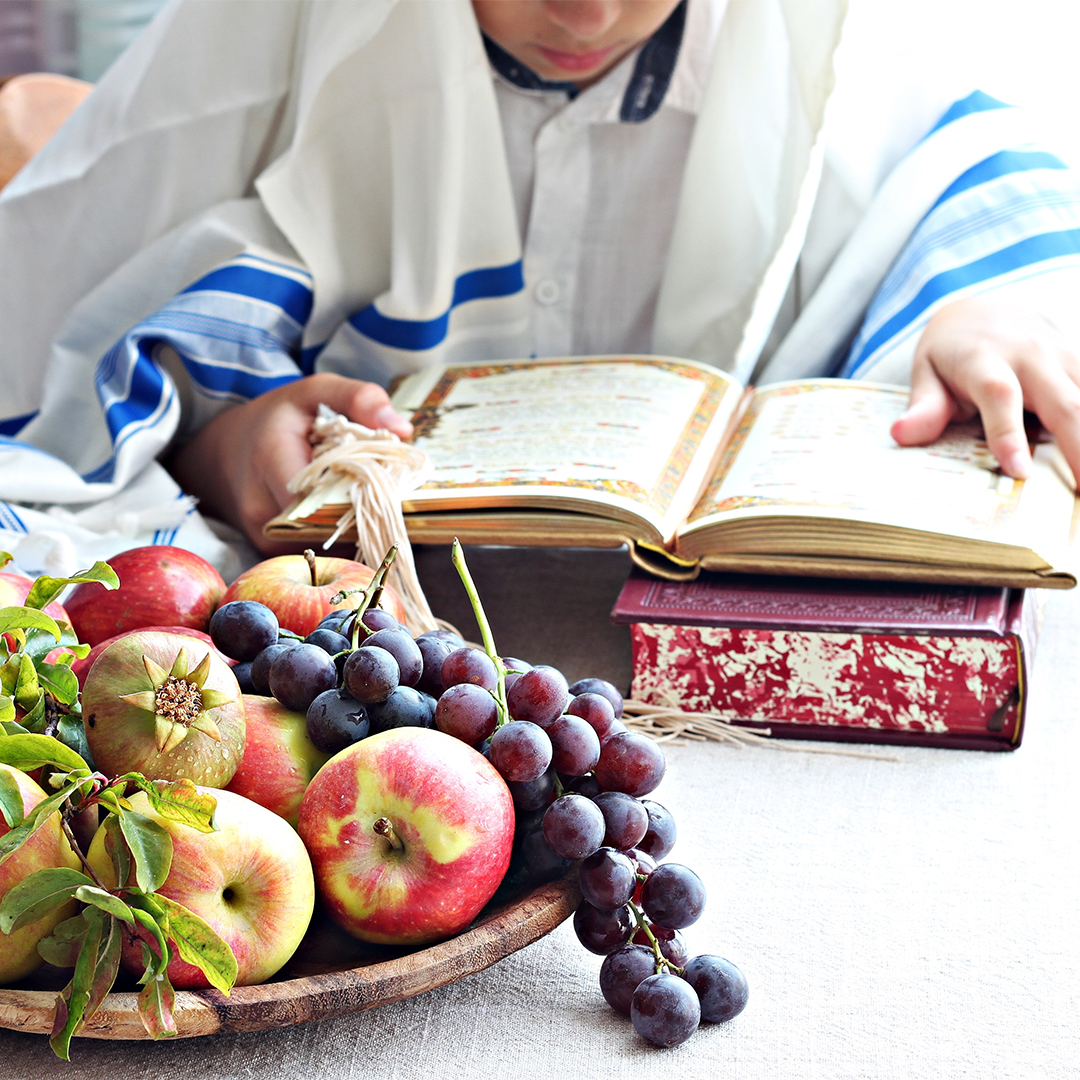
Rosh Hashanah:
Feast of Trumpets
This year the observance of Rosh Hashanah begins
on Wednesday, October 2nd, at sundown
The first of the autumn feasts was the Feast of Trumpets, or Zikhron Teruah, and now called Rosh Hashanah. It falls on the first day of Tishrei, the seventh month of the Hebrew calendar, and was introduced to the Israelites in Leviticus 23:23–25: “The Lord said to Moses, “Say to the Israelites: ‘On the first day of the seventh month you are to have a day of sabbath rest, a sacred assembly commemorated with trumpet blasts. Do no regular work, but present a food offering to the Lord.’”
The usage of the term Rosh Hashanah, “the head (or beginning) of the year,” was introduced in the second century AD after the Temple and Jerusalem were razed by the Romans. Mention of the celebration of the Feast of Trumpets can be found in the Old Testament and is recorded in the companion books of Ezra (3:1–6) and Nehemiah (7:73–8:13). The Israelites had returned from captivity in Babylon, and the temple altar had been rebuilt.
On the first day of the seventh month, Ezra stood before the assembled people and read from the book of the law. He concluded his reading of the Torah with “This day is holy to the Lord your God; do not mourn nor weep.” For all the people wept, when they heard the words of the Law. Then he said to them, “Go your way, eat the fat, drink the sweet, and send portions to those for whom nothing is prepared; for this day is holy to our Lord. Do not sorrow, for the joy of the Lord is your strength” (Nehemiah 8:9b–10).
Rosh Hashanah is set aside as a day of rest and is celebrated by intermittent trumpet blasts, followed by ten days of repentance before the High Holy Day of Yom Kippur. The writers of Rose Guide to the Tabernacle indicate: “Jewish tradition says that God writes every person’s words, deeds, and thoughts in the book of life, which he opens on Rosh Hashanah. If good deeds outnumber sinful ones for the year, the person’s name will be inscribed in the book of life for another year on Yom Kippur. During Rosh Hashanah and the Ten Days of Repentance, people can repent of their sins and do good deeds to increase their chances of being inscribed in the book of life.”
The sounds heard during the Feast of Trumpets are an important ingredient in the Old and New Testaments. It is a public acknowledgment of Jehovah as King of Kings. The first day of the feast is to be a day of rest. Although it ushers in a new year, it is not a frivolous holiday as is the world’s current New Year’s celebrations; instead, it is the beginning of a time of reflection and repentance. During the Feast of Trumpets, there are specific guidelines for the way the shofar is to be blown. There is a specific sequence for blasts on the instrument:
- The first sound heard is the Tekiah, or a long blast;
- Second is the Shevarim, or three short blasts said to mimic the playing of a trumpet. Some have said this sound resembles the cries of a man yearning to reconnect with Jehovah and believe it is the cry of a “broken spirit; a broken and contrite heart” (Psalm 51:17).
- The third sound is the Teruah. The writers on AISH.com define the call as: “The Teruah sound—
9 quick blasts in short succession—resembles an alarm clock, arousing us from our spiritual slumber. The shofar brings clarity, alertness, and focus.”
Jewish conference speaker and writer Sam Nadler gives us insight into the observance during Rosh Hashanah: “The synagogue service during Rosh Hashanah included three fundamental sections. The first section is called Malkiyot (Kingship) emphasizing the fact of God’s sovereignty. The second section is called Zikhronot (Remembrance) which testifies to the fact that our God does remember His covenants and promises to Israel. The third section is the Shofarot section when the shofar is blown. Traditionally, the shofar brings to memory God’s provision of the ram that Abraham sacrificed in place of his only son, Isaac.”
Daniel foresaw the resurrection and rapture of the body of Christ. The call on the shofar was the signal to gather the children of God to meet Him in the air. Jesus reminded His disciples of the words of Daniel, and in 1 Corinthians 15:50–55, Paul interwove the two prophecies:
“Now this I say, brethren, that flesh and blood cannot inherit the kingdom of God; nor does corruption inherit incorruption. Behold, I tell you a mystery: We shall not all sleep, but we shall all be changed—in a moment, in the twinkling of an eye, at the last trumpet. For the trumpet will sound, and the dead will be raised incorruptible, and we shall be changed. For this corruptible must put on incorruption, and this mortal must put on immortality. So when this corruptible has put on incorruption, and this mortal has put on immortality, then shall be brought to pass the saying that is written: ‘Death is swallowed up in victory.’ O Death, where is your sting? O Hades, where is your victory?”
The sound of the trumpet will also signal a much more devastating event: the beginning of what Jeremiah the prophet identified as “the time of Jacob’s trouble” (see Jeremiah 30:7). It is the time to which Jesus referred in Matthew 24:21–22: “For then there will be great tribulation, such as has not been since the beginning of the world until this time, no, nor ever shall be. And unless those days were shortened, no flesh would be saved; but for the elect’s sake those days will be shortened.” Just as the observers of Rosh Hashanah are called upon to examine their lives, so must believers in Jesus Christ reassess their commitment to Him, to His work, and to His Word.
Believers await the sound of the trumpet as a climax of world events for those who have had the doorposts of their lives covered with the blood of the sacrificial Lamb. It is God’s will and purpose to write our names in the Lamb’s Book of Life—not just for a year but for all eternity. The prophet Ezekiel describes what Jehovah God wishes to offer us: “Then I will sprinkle clean water on you, and you shall be clean; I will cleanse you from all your filthiness and from all your idols. I will give you a new heart and put a new spirit within you; I will take the heart of stone out of your flesh and give you a heart of flesh. I will put My Spirit within you and cause you to walk in My statutes, and you will keep My judgments and do them” (Ezekiel 36:25–27).
Not only must we listen for the sound of the trumpet, we must take time daily to reevaluate our relationship with our Lord, before the trumpet sounds. Ask Him, through the Ruach HaKodesh—the Holy Spirit—to reveal any sin in your life, and ask for help to live the life God has called us to live in Him. His grace is sufficient in every situation and circumstance of your life.

Yom Kippur:
Day of Atonement
This year the observance of Yom Kippur begins at
sundown on Friday, October 11th
Yom Kippur, the Day of Atonement, is the most sacred of all the High Holy Days celebrated by the Jews. It is a day for sober personal assessment; the only sacred assembly that requires mourning. The observance of Yom Kippur was established as a means for Jehovah to temporarily reconcile the sin problem and its devastating effects on mankind, and to restore the relationship between Jehovah and His Chosen People.
The word atonement appears multiple times in just one chapter of Leviticus—chapter 16. Leviticus 16:1 states, “The Lord spoke to Moses after the death of the two sons of Aaron, when they drew near before the Lord and died.” Aaron was chosen by God to serve as high priest, and the two oldest of his four sons served as priests in the tabernacle. Nadab and Abihu were standing alongside Moses at the base of Mount Sinai; the brothers experienced firsthand the power, presence, and glory of Jehovah. Yet they died for their sin. What could Nadab and Abihu possibly have done to elicit such a strong reaction? The two men broke the laws God had established for service in the tabernacle:
- The men took on a role that was not assigned to them. Only the high priest was to offer incense in the Holy of Holies.
- They made the offering in vessels that had not been anointed with oil and set apart for service.
- Nadab and Abihu acted without the authority of either Moses or Aaron, and certainly without the blessing of Jehovah.
- Their actions were driven by pride, egoism, arrogance, and self-aggrandizement. They lacked respect for authority and, more importantly, for the holiness of God.
- Leviticus 10:9–10 indicates that the two brothers might have been under the influence of strong drink.
- Incense was only to be offered annually on the Day of Atonement, and under very specific guidelines.
Following ten days of repentance after Rosh Hashanah, the Israelites were instructed to observe the Day of Atonement. The high priest was to be the earthly mediator between the Israelites and Jehovah. It was a position of the loftiest honor and his duties were sacred. On the Day of Atonement, he was to offer sacrifices for the sins of the people and make intercession before the mercy seat in the Holy of Holies.
On Yom Kippur, the high priest donned garments that would have consisted of
- a tunic of white linen woven in one piece (Note: Could the seamlessly woven robe worn by Jesus at His crucifixion indicate His position as High Priest? Hebrews 4:14, says, “Therefore, since we have a great high priest who has ascended into heaven, Jesus the Son of God, let us hold firmly to the faith we profess.”)
- a robe of dark blue, the hem decorated with purple, scarlet, and blue pomegranates
- an apron or ephod woven from threads of gold, blue, purple, and scarlet
- a golden girdle tied around the waist
- pouches containing twelve onyx stones engraved with the names of the tribes of Israel
- a breastplate made of threads of gold, blue, purple, and scarlet linen containing four rows of three jewels. Each jewel in a gold setting was engraved with the name of one of the tribes. It was held in place with rings of gold attached to the shoulder of the ephod. A pocket made into the breast-plate contained the Urim and Thummim (objects used to determine God’s will)
- a golden crown on which was written “Holy to the Lord.”
On the Day of Atonement, the high priest was charged predominately with ministering before Jehovah in the Holy of Holies. It was the most sacred of all his obligations, for the threefold cleansing of the children of Israel rested upon his shoulders. Perhaps he knew that he was the type, the shadow, of the Messiah who was to come to redeem mankind from the burden of sin. As Jehovah had prescribed in Leviticus 16:32–33, the offering on Yom Kippur was made to bring purification—not only for the people but for the priest and his own family, as well as the temple in which the ceremony was held. [The word atonement is found four times in these two verses.] Moses was instructed that the high priest “is to put on the sacred linen garments and make atonement for the Most Holy Place.” (Jesus, our High Priest, had a crown of thorns placed upon His head—a crown of suffering, a crown of rejection. Now He sits on the right hand of God crowned with glory and honor.)
Yom Kippur is the day dedicated to the contemplation of one’s past sins. The people were to consider from what they had been delivered—the bondage of the Egyptians. On that day, the high priest was to make the designated sacrifices—two goats and a ram for the Israelites and a bull and ram for himself and his household. The animals were to be without spot or blemish according to the Mosaic law in Leviticus 4.The high priest was the only individual allowed to enter the Holy of Holies, and only once each year on Yom Kippur, the Day of Atonement. The curtain divided the priests who performed the daily activities in the Holy Place from the Holy of Holies. It was a barrier so that man would not casually, rashly, or disrespectfully enter into the presence of El Hakkadosh—the Holy God—who could not tolerate sin. Habakkuk 1:13 says of Jehovah, “Your eyes are too pure to look on evil; you cannot tolerate wrong-doing.”
Although specially chosen to minister in the Holy of Holies, there were exact steps that had to be undertaken by the high priest before he could safely step through the veil into the overwhelming presence of God. Once inside the veil, the high priest stood before the only item in the chamber: the ark of the covenant. The lid of the ark was known as the “atonement cover,” or the mercy seat. It was guarded by two cherubim, one at each end, fashioned from pure gold, wings outspread and meeting at the center of the cover. It symbolized God’s seat of authority and His presence in the tabernacle. It was Jehovah’s meeting place with the high priest as stated in Exodus 25:22: “There, above the cover between the two cherubim that are over the ark of the covenant law, I will meet with you and give you all my commands for the Israelites.”

Sukkot:
Feast of Tabernacles
This year the observance of Sukkot begins at
sundown on Wednesday, October 16th
The final of the seven feasts of the year is Sukkot, the Feast of Tabernacles, or Booths. It is a celebration of the fall harvest, which even today lasts an entire week. The Israelites built temporary dwellings as a reminder of their forty-year trek through the wilderness. Jews today quickly construct a small hut where meals are eaten during the festival. Leviticus 23:40 detailed the materials to be used: “On the first day you are to take branches from luxuriant trees—from palms, willows and other leafy trees—and rejoice before the Lord your God for seven days.”
The branches used to build the booths were symbolic of victory (palm), peace (olive), and (willow) blessings. The sukkah, or shelter, must have at least three walls with a roof of branches to allow rain to fall inside. It is usually decorated with flowers and fruit, and one must also be able to view the stars. The feast is commemorated for eight days in the land of Israel, and nine days wherever Jews are scattered world-wide. On the first day of the observance and the final day, no manual labor is permitted. During the interim, a period called Chol Ha-Mo’ed, work is allowed.
The Feast of Tabernacles is a feast of expectation; an ancient reminder that one day the children of Israel would be firmly planted in their own land looking forward with anticipation to the arrival of the Messiah. It is also a time to remember Jehovah’s blessings. It is a time of restored communion with God, and a reminder that this sojourn on earth is only temporary. In ancient days, the Feast of Tabernacles was so festive that it was often referred to simply as “The Feast.”
From a sacred viewpoint, the feast is a celebration of the joy of knowing that for another year one’s sins will be forgiven. From a prophetic outlook, it is a look forward to the coming of Yeshua after which, according to Zechariah 14:16, “Then the survivors from all the nations that have attacked Jerusalem will go up year after year to worship the King, the Lord Almighty, and to celebrate the Festival of Tabernacles.”
Sukkot is a time of great happiness, of parties, of praise, of hospitality. The Shabbat that occurs during the feast is a time to read the Torah, especially the book of Ecclesiastes (symbolic of the reality that life is fleeting). On the evening at the beginning of the feast, candles are lit just before the sun sets and blessings are recited. After sundown, a prayer of thanksgiving is offered. Before the evening meal, Kiddush (a blessing recited over wine or grape juice) is recited, or perhaps only a shortened version of the blessing of the wine. This is followed by the Sukkah blessing and then the blessing of the bread. The lulav is waved. It is a closed frond from the date palm, and is a part of “the Four Species used during the Jewish holiday of Sukkot. The other [three] are the hadass (myrtle), aravah (willow), and etrog (citron).
Songs of praise are sung, usually taken from Psalm 136: “Give thanks to the Lord, for he is good, for his steadfast love endures forever.” The family and friends then move into the Sukkah to pray together, eat, enjoy music, and generally unwind. In Old Testament times, it was also a time of sacrifice. In his book Thus Shalt Thou Serve: The Feasts and Offerings of Ancient Israel, author and Bible teacher C. W. Slemming wrote: “Numbers 29 lists the number of animals to be used in the sacrifices of that week. The young bulls, diminishing in number from day to day for eight days, were 13, 12, 11, 10, 9, 8, 7, 1. It has been suggested that the decrease to the one foretells…how the many sacrifices of the law would, in the fullness of time, be reduced to the One Sacrifice that would be made once in the end of the age. On the last day of the feast there were special celebrations and joy.”
In John 7:37, we read that Jesus went up to Jerusalem during this particular feast. While there, He declared, “Let anyone who is thirsty come to me and drink.” Of this declaration, Slemming wrote: “Thus the Lord was turning the thoughts of the people away from the shadow to the substance, away from ritual to reality.” The feasts were times when all physically able Jewish males were charged with going up to Jerusalem to appear before the Lord in the temple, the place that was symbolic of His presence. There they called to remembrance what Jehovah had done in bringing them out of Egypt into the Promised Land. They praised God for His provision and offered up sacrifices that would postpone their sins for another year. “But when the fullness of time had come, God sent forth his Son, born of woman, born under the law, to redeem those who were under the law, so that we might receive adoption as sons” (Galatians 4:4–5).

Sukkot And Prophecy
There are several prophetic dimensions associated with Sukkot. As we saw in Zechariah 16, it is an image of the time when the world will worship the Messiah in Jerusalem. Just as it was a remembrance of the time that God sheltered the Israelites in a cloud by day and a pillar of fire by night, it is a vision of the time when Israel will no longer be oppressed by ungodly nations. Ezekiel 37:26–27 gives us a preview of Israel’s future: “Moreover I will make a covenant of peace with them, and it shall be an everlasting covenant with them; I will establish them and multiply them, and I will set My sanctuary in their midst forevermore. My tabernacle also shall be with them; indeed I will be their God, and they shall be My people.”
There were two ceremonies observed on the last day of the feast in Bible times. In the first, water was carried by a priest from the Pool of Siloam to the temple. It was symbolic of the coming of the Messiah when, according to Isaiah 11:9, “For the earth shall be full of the knowledge of the Lord as the waters cover the sea.” The people also marched around the temple carrying torches evocative of the Messiah who would be the light of the world.
Jesus was in Jerusalem with His disciples on the last day of the feast. The New Testament gives us a glimpse into Jesus’ last observance of those two practices: On the last day, that great day of the feast, Jesus stood and cried out, saying, “If anyone thirsts, let him come to Me and drink. He who believes in Me, as the Scripture has said, out of his heart will flow rivers of living water” (John 7:37–38). Then Jesus spoke to them again, saying, “I am the light of the world. He who follows Me shall not walk in darkness, but have the light of life” (John 8:12).
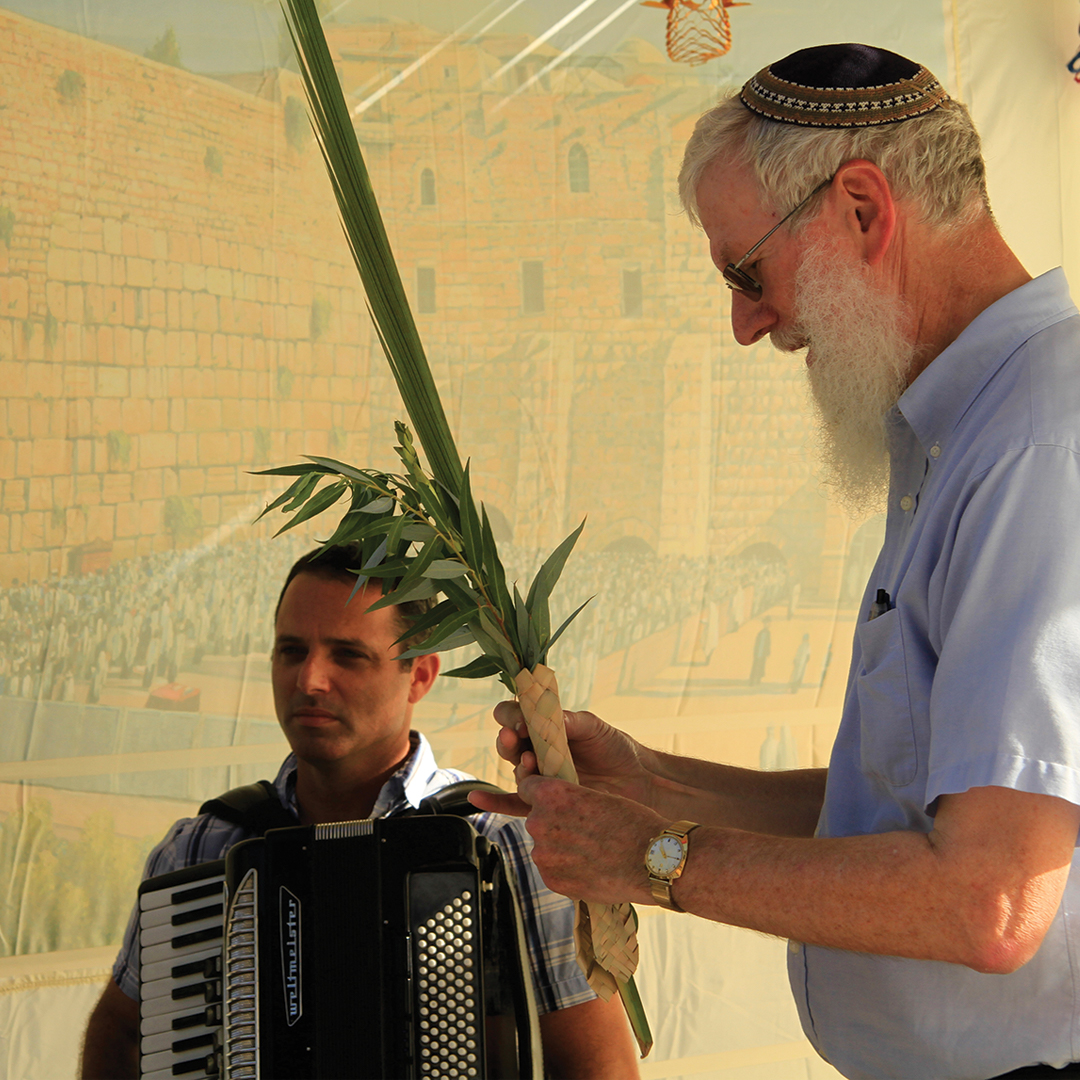
Today, the Jewish people await the coming of Mashiach, the anointed one; the Church awaits the return of Lord Yeshua who will come to tabernacle with His people. John, the Revelator, wrote: I heard a loud shout from the throne, saying, “Look, God’s home is now among his people! He will live with them, and they will be his people. God himself will be with them” (Revelation 21:3). When that day appears, we will not only tabernacle with Him, we will know Him and abide with Him throughout all eternity. Our greatest joy is yet to come.
David reminded us in Psalm 30:5 that “joy comes in the morning.” Jesus is coming soon for His bride. Our Lord warned in Matthew 24:44, “Therefore you also must be ready, for the Son of Man is coming at an hour you do not expect.” “And I [John] heard a loud voice from the throne saying, ‘Behold, the dwelling place of God is with man. He will dwell with them, and they will be his people, and God him-self will be with them as their God’” (Revelation 21:3).
